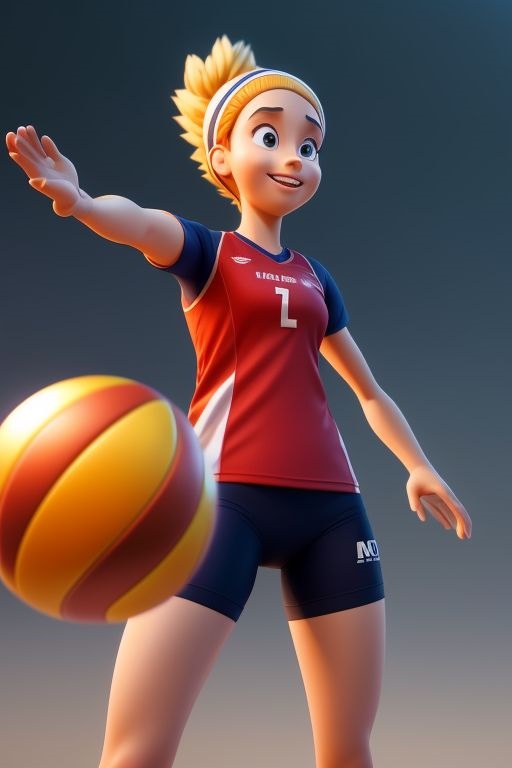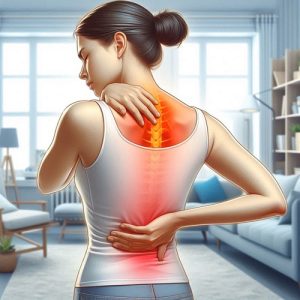Knee Pain Among Volleyball Players and Methods of Reducing It
Knee injuries are a prevalent issue for volleyball players, with the sport’s high-impact moves and rapid direction changes putting significant stress on knee joints. For players, the knee is central to performance, allowing explosive jumps, quick landings, and swift lateral movements. But constant pressure on the knee can lead to a range of painful injuries, from jumper’s knee and patellar tendinitis to more severe ACL and MCL injuries. This article explores the causes, prevention methods, and effective treatment options to manage knee pain for volleyball athletes, emphasizing strengthening exercises, proper warm-up techniques, physiotherapy, and equipment like knee braces.
Introduction
The Importance of Knee Health in Volleyball
Knee health is paramount for volleyball athletes, as this joint enables pivotal movements that impact the game’s competitive edge. Volleyball combines agility, power, and flexibility, making the knees vulnerable to repeated impact and stress. Injuries in this area can range from mild discomfort, which may affect daily activities, to severe damage that can put an athlete’s career at risk. Understanding the types and causes of knee pain, alongside targeted prevention and recovery techniques, can be transformative for a volleyball player’s longevity in the sport.
Knee Pain in Volleyball Players: Key Terms
Several keywords are critical in the conversation around knee pain in volleyball, such as jumper’s knee, ACL injuries, patellar tendinitis, and sports physiotherapy. Effective knee injury prevention methods include structured warm-up routines, strengthening exercises, and rehabilitation, often supplemented with knee support equipment and physiotherapy. Together, these strategies reduce the likelihood of injury and facilitate recovery when injuries occur.
1. Common Knee Injuries in Volleyball Players
Knee injuries among volleyball players can vary in type and severity. Below are the most common injuries experienced:
- Jumper’s Knee (Patellar Tendinitis): A common injury where the tendon connecting the kneecap to the shin becomes inflamed, often due to repetitive jumping and landing actions.
- ACL Injuries: Tears to the Anterior Cruciate Ligament (ACL) can be a devastating injury, frequently resulting from sudden stops, turns, or awkward landings, which are routine in volleyball.
- MCL Injuries: The Medial Collateral Ligament (MCL) can be strained during intense side-to-side movements, compromising knee stability and often requiring extended rehabilitation.
- Patellofemoral Pain Syndrome: Pain caused by the misalignment of the kneecap, exacerbated by movements that overload the joint, leading to discomfort during everyday and sporting activities.
These injuries not only impair athletic performance but can also cause prolonged periods away from the sport.
2. Prevention Methods for Knee Pain in Volleyball
Preventing knee pain involves a blend of proper physical conditioning, effective warm-up routines, and the correct use of support equipment. Here are some strategies to prevent common knee injuries in volleyball.
Strengthening Routines
Strengthening exercises are crucial to fortify the knee’s supportive muscles and ligaments. Strong quadriceps, hamstrings, and calves distribute force evenly, reducing knee joint stress.
- Squats: Both traditional and single-leg squats help in enhancing muscle power and knee stability.
- Leg Extensions and Curls: Strengthen the quadriceps and hamstrings, promoting joint protection.
- Calf Raises: Essential for shock absorption during jumps, calf raises reinforce lower leg support and prevent tendon strain.
Stretching Exercises
Stretching exercises are foundational for flexibility, which reduces the risk of strains and pulls. Key stretches include:
- Quadriceps Stretch: Stretching the quadriceps improves flexibility in the front thigh muscles, reducing stress on the knee cap.
- Hamstring Stretch: Hamstrings support knee flexion, and a well-stretched hamstring can prevent sudden strains during quick movements.
- Calf Stretch: Calf stretches help prevent Achilles and knee tendon issues by loosening the muscles that absorb jump impacts.
Warm-Up Techniques
A structured warm-up ensures that the knee joint is prepared for intense activity. Dynamic stretching and gentle cardiovascular exercises elevate heart rate and temperature, priming the knee for action.
- Jogging or Skipping: Activates the muscles around the knee, gradually preparing them for higher intensity.
- Butt Kicks and High Knees: Functional warm-ups that mimic sport-specific actions, warming up the quadriceps and glutes.
- Lunges: Stretch and strengthen simultaneously, engaging multiple leg muscles while gently mobilizing the knee.
3. Dynamic and Static Stretching Techniques
Dynamic Stretching
Dynamic stretching helps activate muscles by moving them through a range of motion, suitable for pre-game warm-ups.
- Leg Swings: Swinging each leg forward and backward stretches the hamstrings and hip flexors, enhancing knee flexibility.
- Walking Lunges with a Twist: This targets the hip flexors, quads, and core, and primes the body for directional changes on the court.
Static Stretching
Post-game or practice, static stretching aids in recovery, reducing muscle tension and preserving flexibility.
- Quad Stretch (Standing or Lying): Holds for 30 seconds to lengthen the quads and protect the patellar tendon.
- Calf Stretch Against Wall: Holding a calf stretch can prevent tension buildup that often leads to knee pain.
4. Injury Prevention Through Proper Equipment
Knee Support Equipment
The correct equipment can significantly reduce knee strain. Volleyball knee pads, braces, and other support gear provide cushioning and stabilization, essential for knee protection during intense play.
- Knee Braces: Aids in lateral stability, essential for rapid changes in direction. Useful in ACL and MCL injury prevention.
- Volleyball Knee Pads: Reduce the impact force during falls and slides, preventing direct knee trauma.
Sports Physiotherapy for Knee Stability
Sports physiotherapy incorporates targeted exercises and manual techniques that help volleyball players maintain knee stability and resilience against injuries.
- Rehabilitation Exercises: Physiotherapists design specific rehabilitation routines focusing on knee stabilization and muscle endurance.
- Manual Therapies: Techniques like soft tissue mobilization and myofascial release help address muscle tightness and imbalances around the knee, ensuring balanced joint movement.
5. Recovery Strategies
After sustaining knee injuries, a structured recovery program enables players to regain function and return to the sport safely. Recovery can involve rest, physical therapy, and in severe cases, surgical intervention.
- Physical Therapy: Offers structured exercises that aid in strengthening the injured area while improving flexibility.
- Massage Therapy: Reduces muscle tension around the knee, promoting blood flow and healing.
Pain Relief Methods
In addition to physical therapy, pain management techniques, such as ice, heat, and specific anti-inflammatory medication, are essential for reducing swelling and discomfort.
- Ice and Heat Therapy: Ice reduces swelling immediately after an injury, while heat applied later can ease muscle tension and aid healing.
6. Kinesiotaping and Other Support Techniques
Kinesiotaping
Kinesiotaping is a popular method in sports to support injured areas without restricting movement.
- Application Technique: Aimed at reducing pressure on the knee’s pain points, kinesiotaping promotes proper movement and alignment during physical activity.
Knee Injury Prevention Techniques for Volleyball Players
Volleyball players can adopt effective prevention techniques to minimize knee injuries. These strategies focus on conditioning, proper technique, protective equipment, and a combination of flexibility and strengthening exercises. This section dives into detailed, actionable methods for knee injury prevention, supported by expert-recommended practices.
1. Improving Landing Technique
Proper landing mechanics are crucial in volleyball to prevent knee strain. When landing from jumps, the impact force on the knees is intense. By adopting a controlled and soft landing, players can reduce this force, thereby protecting the knee joint from injury.
- Quiet Landings: Attempt to land as quietly as possible, which engages the muscles to absorb shock before it reaches the knee joint. Quiet landings indicate good muscle control and help minimize force exerted on the knee ligaments- Bending the Knees: A slight knee bend upon landing helps disperse the impact through the quadriceps and hamstrings, rather than concentrating it on the knee itself. Flexed knees on landing provide a cushion effect that reduces the strain on knee ligaments and cartilage .
Strengthening and Conditioning Programs*
Strengthening key muscle groups around the knee and hip can significantly enhance stability and reduce the risk of injury. Focused conditioning reduces knee stress by reinforcing the muscles that aid in movement and stabilization.
- Quadriceps and Hamstrings: Strengthening these muscles provides essential support to the knee, reducing its burden during play. Squats, lunges, and leg presses are effective for these muscle groups.
- Calf Muscles: Strong calf muscles absorb landing impact and contribute to balance, protecting the knee during jumps and sudden changes in direction .
- Core: Core exercises, such as planks and leg raises, improve body control, which is critical for maintaining knee alignment during play.
3. Flexibility and Stretching
Flexibility is essential in preventing tight muscles from pulling on and stressing the knee joint. A combination of dynamic stretches (pre-play) and static stretches (post-play) can reduce tension around the knee.
- Dynamic Stretching (Pre-Game): Dynamic stretches, such as leg swings and lunges, activate the muscles and increase blood flow, preparing the knee for intense movements.
- Static Stretching (Post-Game): Holding static stretches for the quadriceps, hamstrings, and calves post-game promotes recovery and prevents tightness that can lead to injury .
*4. Wearing Protective equipment
While knee pads and braces don’t eliminate the risk of injury, they offer a layer of protection, especially for players prone to knee injuries.
- Knee Pads: Volleyball knee pads protect against impact injuries during dives and slides. These pads can also shield the patella from direct hits that may lead to bruising and inflammation.
- Knee Braces: For players with previous knee injuries or instability, knee braces provide extra support to the ligaments, reducing the risk of re-injury by stabilizing the joint .
*5. Rest and Recovery-impact sports like volleyball, overuse is a common cause of knee injuries. Adequate rest and a structured recovery routine are essential to prevent chronic knee issues.
- Scheduled Rest Days: Rest days allow the knee joints and surrounding muscles to recover, reducing cumulative stress on the ligaments and tendons.
-
Active Recovery: Light activities, such as swimming or cycling, promote blood flow and aid in muscle recovery without placing additional stress on the knee.



